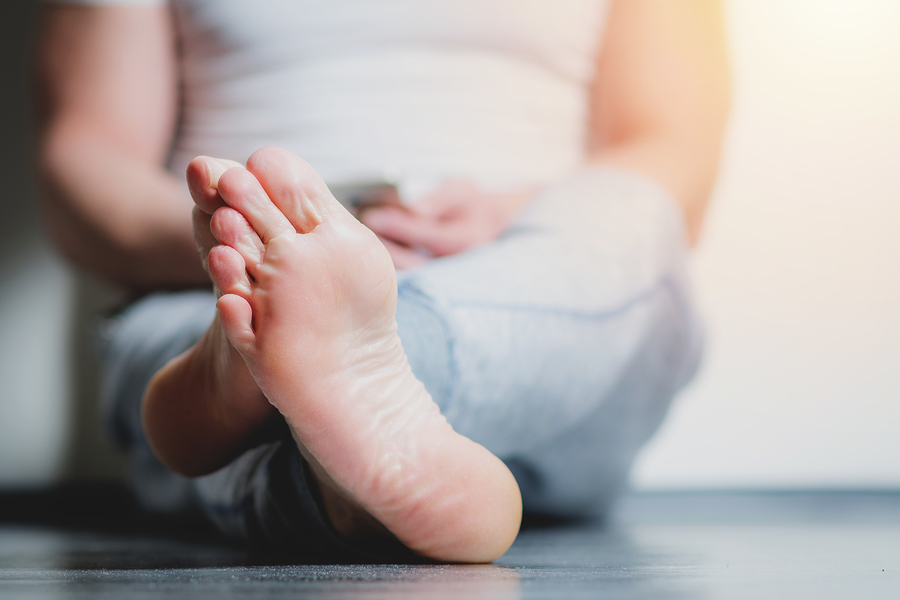If you are someone who goes walking, hiking, or running often, then you will likely have heard of — or perhaps even experienced — plantar fasciitis.
What Is Plantar Fasciitis?
This condition is an inflammation of the thick band of tissue located in the bottom of the foot. This tissue — also known as fascia — runs all the way from your toes to your heel.
It is essentially a type of repetitive strain injury that can range in seriousness from slightly painful to seriously debilitating.
Plantar Fasciitis Symptoms
When this unpleasant condition presents then you will begin to feel pain in the heel.
People who suffer with this problem often find that the pain is the worst first thing in the morning, and then starts to lessen throughout the day. However, if you have plantar fasciitis and you spend a lot of time sitting during the day, then the pain can also feel heightened again when you stand up for the first time.
Alleviating The Symptoms
When experiencing this condition, it can be helpful to stay active during the day. This activity should take place in moderate bursts though as too much time on your feet could actually make the pain and problem worse.
Regularly stretching the foot in question through a range of motions is a good idea, and is something you may also wish to do as a preventative precaution in the future.
What Causes This Problem?
When you over-stretch and over-use the fascia in the arch of your foot then tiny tears can appear on the surface. This tissue is tasked with supporting the muscles in the arch of the foot, and over-exerting this area can quickly soon cause a problem to present.
When these tiny tears begin to take place, pain and inflammation soon becomes unavoidable.
Risk Factors For Plantar Fasciitis
Statistics show that women are more at risk of this physical health problem than men. Additionally, people aged between 40 and 60 years old are more likely to experience it than younger people.
People who are obese are also at an increased risk of developing plantar fasciitis, as are those who have flat feet or high arches. Wearing high heel shoes often, or wearing shoes that have thin soles — or soles that have become seriously worn out through prolonged use — can also increase the risk. Furthermore, people who spend several hours standing or moving around every day may find they are more likely to develop this condition.
Get A Diagnosis
Although it may be simple to assume that you have this condition, it is always a good idea to get confirmation from your doctor. By asking you about your symptoms and giving you a physical exam, your doctor can quickly determine if plantar fasciitis is the correct cause of the pain you are feeling.
It is not uncommon that your doctor will send you for a X-ray or an MRI to rule out other more serious conditions.
Treatment
There are several actions you can take at home to relieve the pain and inflammation that you are experiencing.
Icing the arch of your foot is a good first step, and you can do so by freezing a bottle of water and then rolling it up and down your foot. Wearing night splints when you are asleep can help to stretch out the calf and the foot while you are in bed. This is something you can either purchase yourself or obtain from your doctor.
If the pain persists for more than a few weeks or months then you may need physical therapy to correct the problem. This can also help to strengthen the feet to protect against future damage. Physical therapy exercises will target the tissue in the foot as well as the Achilles tendon. This kind of therapy can also help to strengthen the muscles in the leg, which will enhance the stability of your heels and ankles.
Anti-inflammatory medication can be of great use when you are experiencing this condition. Drugs like ibuprofen and naproxen can help to tackle the inflammation and also to ease the pain.
Taking a break from the activity that has lead to this problem is also important. You may also find that you take some relief by wearing more supportive shoes or using inserts in your current footwear. Giving yourself more support while you are recovering is always a good idea.
If the pain and inflammation continues for up to one year, then it is likely that you will require steroid shots to treat it, or perhaps even surgery.
References
1. https://www.painscience.com/tutorials/plantar-fasciitis.php
Related Posts
Cigarettes May Inhibit Inflammation Treatments
Axial spondyloarthritis, also known as AxSpa, is a chronic…










